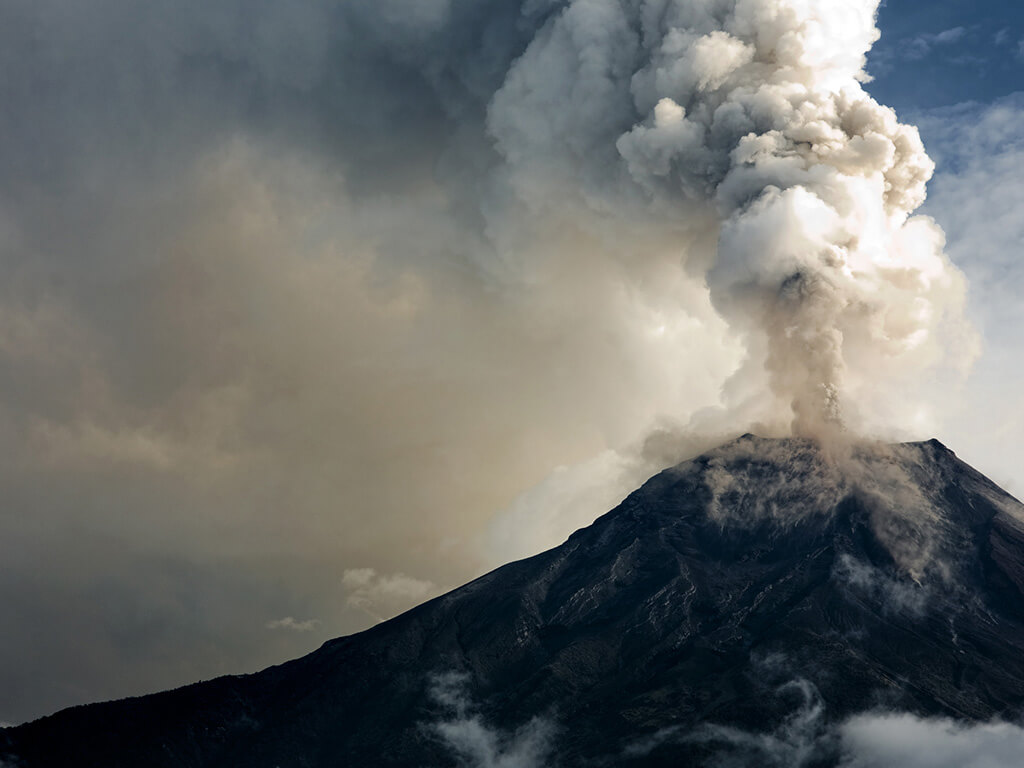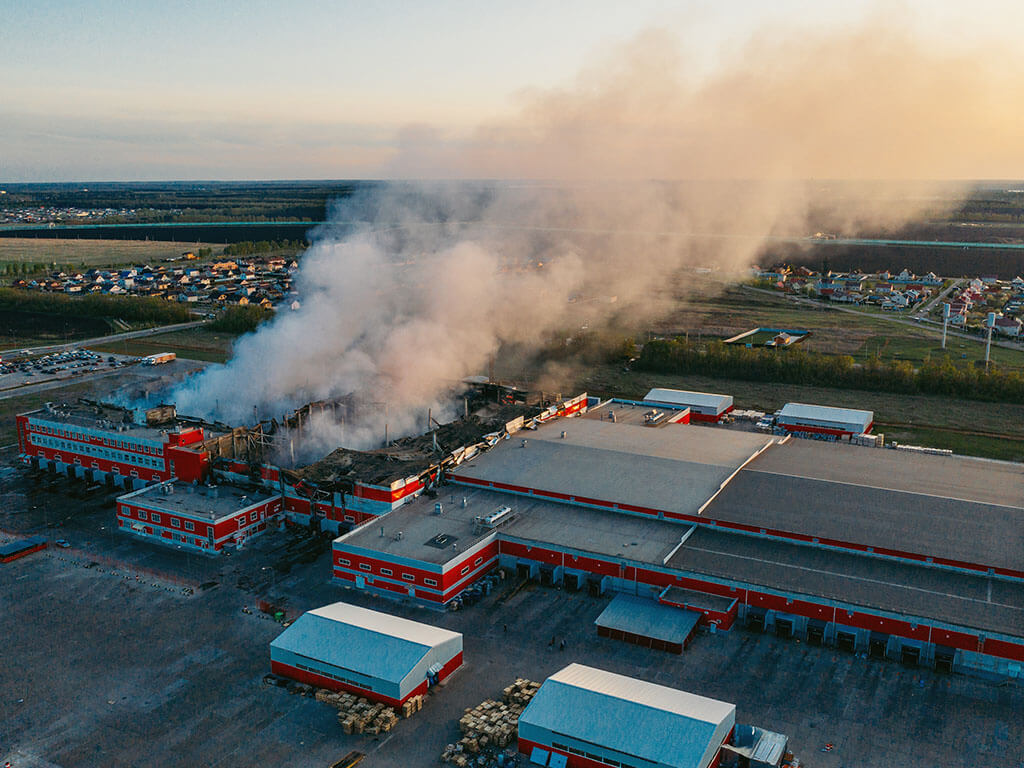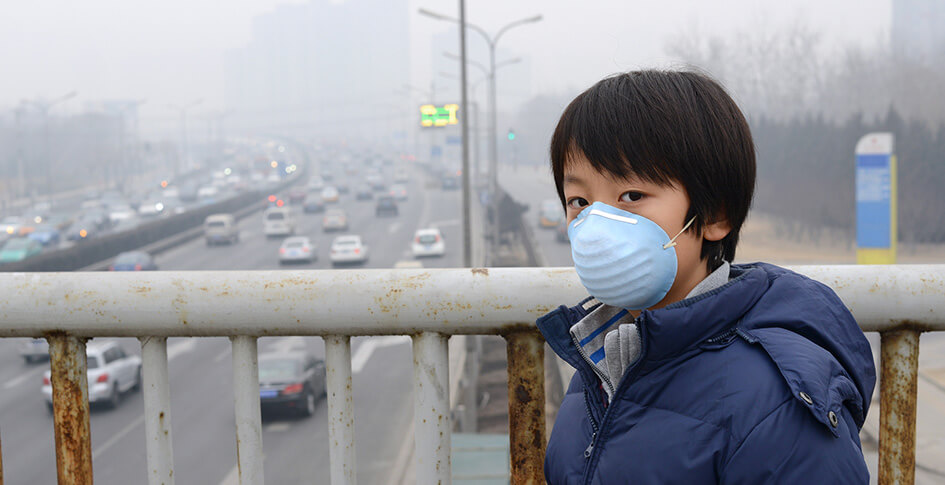In Part 1 of this article, we explained how weather and climate related disasters can worsen air pollution. However, there are many types of unfortunate events which can affect your air. In part two of this article, we will discuss six more disaster types, ranging from the cosmic to the current.
Solar flares
Let’s start with the largest disaster, size-wise, and the smallest disaster pollution-wise. Solar flares occur when tangles in the Sun’s magnetic field release a massive amount of radiation at once, and they can be larger than the earth itself. Most of the time, these bursts of radiation do not have much effect on earth, but they still have an effect. According to Cornell University, “It is quite certain that the solar activity may impact on the air pollution, but the relationship is very weak and indirect.”
While this doesn’t seem to be that significant, particularly large solar flares may still make a noticeable (if indirect) impact on air pollution. The largest solar flare on record, in 1859, caused telegraph wires to overload, sparking some wildfires.
Volcanos
It probably won’t surprise you to learn that mountain-sized funnels of geothermal energy spewing liquid rock, ash, and gas tend to contribute to air pollution. Volcanoes release many harmful gases including hydrogen sulfide (which can cause pulmonary edema) and hydrogen halides (which can cause acid rain). They also release enough carbon dioxide (a greenhouse gas) that it can drive away oxygen, forming lethal pockets in low lying areas. According to the United States Geological Survey: “The boundary between healthy air and lethal gas can be extremely sharp; even a single step upslope may be adequate to escape death. In 2006, three ski patrol members were killed at Mammoth Mountain ski resort after falling into a snow depression surrounding a volcanic fumarole [which was] filled with cool CO2 gas.”
However, the gas with the most far-reaching impact is sulfur dioxide. Sulfur dioxide has three harmful effects: First, the area around the eruption can be plagued by vog, or volcanic smog, which is created when sulfur dioxide reacts with oxygen, sunlight, dust, and other volcanic gases. Secondly, sulfur dioxide plays an important role in the formation of acid rain. Thirdly, sulfur dioxide forms secondary particulate matter—tiny particles which can reflect sunlight away from this earth. Large enough eruptions send sulfur dioxide so high into the atmosphere that—when it forms secondary particulate matter—it is difficult for rain to wash these particles away. This may result in a global cooling event. The most notable of these cooling events was the 1815 explosion of Indonesia’s Mount Tambora. The air pollution from this explosion lowered global temperatures by three degrees Celsius, causing crop failures in parts of Europe and North America the next year.
Underwater volcanoes also release an extra-special form of air pollution: methylmercury. According to the UN Environment Programme: “Geothermal activity[...]can cause methylmercury—a highly toxic form of mercury found in aquatic environments—to be released into the air. When inhaled, mercury vapour affects the nervous, digestive, and immune systems, lungs and kidneys, and may be fatal.”
 Ecuador’s Tungurahua volcano erupts. Image credit: Getty / Kalistratova
Ecuador’s Tungurahua volcano erupts. Image credit: Getty / Kalistratova
Earthquakes
Like volcanos, earthquakes can release sulfur dioxide into the air. They also may stir up dust.
Underwater earthquakes may cause tsunamis, which, like floods, can cause a proliferation of mold.
However, these are small potatoes compared to the real damage earthquakes (and their associated tsunamis) cause; earthquakes damage industrial facilities, resulting in horrific industrial accidents. We will cover non-earthquake-related industrial accidents in the next section. To give you an example of earthquake related industrial accidents, though, California’s 1994 Northridge earthquake led to “nine petroleum pipeline ruptures, 752 natural gas line breaks, [and] 60 emergency hazmat incidents that included release of sulphuric acid during train derailment,” according to a 2015 paper.
Industrial accidents
As you might imagine, the type of contaminants released in the air by industrial accidents depend on which industrial facility is affected. Oil refinery fires release particulate matter and harmful gases. Nuclear disasters release radioactive material. Chemical plant disasters release whatever chemical they are processing. For this reason, it will be more informative to discuss this topic using three recent industry-related air pollution disasters as examples.
- The Seveso Dioxin Cloud: In 1976, a valve failure at a chemical plant in Italy caused an explosion, releasing an enormous cloud of toxic 2,3,7,8-tetracholorodibenzo-p-dioxin (commonly known as dioxin) across this countryside. This resulted in widespread plant and animal death. People in the path of the cloud experienced headaches and nausea, and 19 children were admitted to the hospital with skin lesions. Follow up studies found decreased fertility and an increased risk for cancers among the population exposed.
- The Bhopal Tragedy: In 1984, substandard safety procedures at an American-owned pesticide factory in Bhopal, India caused a leak of methyl isocyanate gas. The resulting exposure killed at least 3,787 people (some estimates go as high as 20,000) and sickened half a million. The surviving population is still dealing with ongoing vision loss, respiratory impairment, cancers, and other health problems. The Bhopal gas tragedy might be the world’s worst industrial accident.
- The BP Oil Spill: In 2010, the Deepwater Horizon oil rig in the Gulf of Mexico exploded, killing 11 workers, and spilling four million barrels of oil. While primarily a water pollution disaster, the event also affected air quality. According to a 2012 article summarizing a 2011 study, the evaporation of oil released hydrocarbons into the immediate area. Oil burned during the cleanup efforts created nitrogen dioxide and other nitrous oxides, which can create ozone and particulate matter when they interact with sunlight. Also, four percent of the oil burned entered the atmosphere as soot particles.
The variety of these three disasters, in scope, pollution, and loss of life, gives you an idea of how varied industrial accidents can be. At least these major air pollution disasters were unintentional. The same cannot be said for our next category.
 The aftermath of a Russian warehouse fire. Image credit: Getty / Vladimir Zapletin
The aftermath of a Russian warehouse fire. Image credit: Getty / Vladimir Zapletin
War and terrorism
Some of the most tragic environmental disasters occur when the destruction (if not the pollution) is deliberate. We’ll discuss two infamous examples below.
- In 1991, as Sadam Hussein’s army withdrew from Kuwait, they set fire to 650 oil wells. The fires took 10 months to put out. In that time, the wells released “several thousand tons of gases such as sulfur dioxide, carbon monoxide, hydrogen sulfide, carbon dioxide, and the oxides of nitrogen, as well as particulate matter, on a daily basis containing partially burned hydrocarbons and metals, all of which were potential for affecting human health and vegetation growth,” according to a 1992 study. The resulting pollution temporarily lowered the average temperature in nearby Bahrain by 7.5 degrees. The good news is that the pollution did not climb high enough in the atmosphere to cause global climate disruption.
- The attack on the World Trade Center in 2001 released a toxic cloud of silica, plastics, fiberglass, and asbestos across lower Manhattan and beyond. Various government and nonprofit organizations are tracking how this will affect the health of rescue workers and those exposed over the coming decades. Unfortunately, some links have already been established between this event and serious health consequences. For instance, as early as 2008, one study found a link between persons enrolled in the World Trade Center Health Registry and prostate, thyroid, or skin cancers.
Epidemics
We’ve discussed before how air pollution can make diseases more dangerous, but airborne diseases can be considered pollution in and of themselves. After all, would you rather breathe in virus particles or exhaust from an oil fire? We think the only logical answer is: neither. As a 2015 study puts it, airborne pathogens “may not change the air quality beyond the legal ambient air quality limits but harm human and animal life to great extent.”
Epidemics might be ranked either by total number of deaths, or by percentage of the population killed. However, the mists of history often obscure the exact death toll. Thus, there is some debate over what counts as the “worst epidemic in history”. The three most frequent contenders for this dubious honor are the Black Death, the Native American smallpox epidemic, and the ‘Spanish’ Flu.
- The Black Death in the 14th century had an estimated death toll of 25-200 million; Europe was hard-hit, losing perhaps 40%-60% of its population. Asia didn't fare any better.
- Really a series of epidemics, the Native American smallpox epidemic occurred in North and South America during the 16th and 17th centuries. Europeans introduced smallpox, (as well as many other diseases) to which the native population had no immunity; this led to a series of die-offs shortly after contact with each native group. As a result, the Americas lost approximately 56 million people, or 90% of the native population. The depopulation was so extreme that it led to the myth of America as a pristine wilderness. It also caused global cooling as previously farmed land became overgrown with vegetation, pulling carbon from the atmosphere.
- The 1918-1919 influenza pandemic, was mistakenly named the ‘Spanish Flu’ because neutral Spain didn’t censor its press during World War I, and thus reported on the pandemic openly. It infected one-third of the world’s population, and killed approximately 50 million people. Because it affected young, healthy individuals, it temporarily lowered life expectancy in the United States by nearly 12 years.
Other dishonorable mentions include the Plague of Justinian (30-50 million dead), HIV (25-35 million dead), China’s ‘Third Plague’ (12 million dead).
So where does COVID-19 fit into all this? As of this writing (March 2022) confirmed COVID deaths stand at 6.05 million, but this may be a vast undercount. The actual death toll could be higher than 22 million. This means that, in terms of total deaths, COVID is somewhere between the sixth and eighth worst plague in history (so far). However, in terms of percentage of the population, it doesn’t even make the top 12.
This might be a good time to note that we power air purifiers specifically designed to reduce viruses and bacteria in the air. And you don’t have to wait for a disaster to get one. ActivePure was around before the current plague, and we’ll be around after, too.
 Okay, that was all a bit depressing. Take a breather, and then we’ll get into the positive part. Image credit: Getty / Iker Martiarena
Okay, that was all a bit depressing. Take a breather, and then we’ll get into the positive part. Image credit: Getty / Iker Martiarena
A few final words…
Somewhere in the world, someone is about to have a very bad day because of a tornado, earthquake, war, or drought. And that person’s bad day can become your bad air quality.
Best not to wait for disaster. Contact ActivePure today to be put in touch with your local distributor. They can’t help you if a volcano erupts under your feet, but they can if one erupts halfway around the world. They can also help you develop an air quality plan for reducing your indoor air pollution, matching you with the purifier that is right for your home or work.
After all, disasters are going to happen; but that’s no reason to hold your breath.



